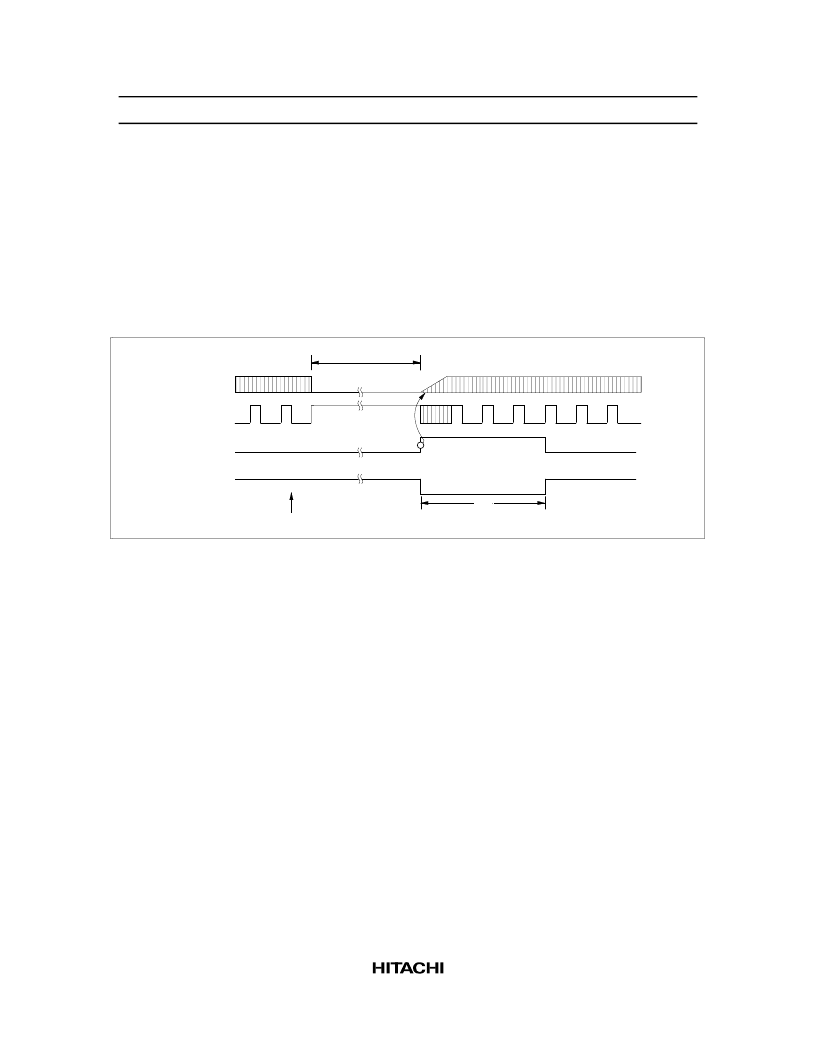- 您現(xiàn)在的位置:買賣IC網 > PDF目錄370462 > HD404459 (Hitachi,Ltd.) 4-bit HMCS400-Series microcomputer(4位單片微計算機) PDF資料下載
參數(shù)資料
| 型號: | HD404459 |
| 廠商: | Hitachi,Ltd. |
| 英文描述: | 4-bit HMCS400-Series microcomputer(4位單片微計算機) |
| 中文描述: | 4位HMCS400系列微機(4位單片微計算機) |
| 文件頁數(shù): | 31/120頁 |
| 文件大?。?/td> | 692K |
| 代理商: | HD404459 |
第1頁第2頁第3頁第4頁第5頁第6頁第7頁第8頁第9頁第10頁第11頁第12頁第13頁第14頁第15頁第16頁第17頁第18頁第19頁第20頁第21頁第22頁第23頁第24頁第25頁第26頁第27頁第28頁第29頁第30頁當前第31頁第32頁第33頁第34頁第35頁第36頁第37頁第38頁第39頁第40頁第41頁第42頁第43頁第44頁第45頁第46頁第47頁第48頁第49頁第50頁第51頁第52頁第53頁第54頁第55頁第56頁第57頁第58頁第59頁第60頁第61頁第62頁第63頁第64頁第65頁第66頁第67頁第68頁第69頁第70頁第71頁第72頁第73頁第74頁第75頁第76頁第77頁第78頁第79頁第80頁第81頁第82頁第83頁第84頁第85頁第86頁第87頁第88頁第89頁第90頁第91頁第92頁第93頁第94頁第95頁第96頁第97頁第98頁第99頁第100頁第101頁第102頁第103頁第104頁第105頁第106頁第107頁第108頁第109頁第110頁第111頁第112頁第113頁第114頁第115頁第116頁第117頁第118頁第119頁第120頁

HD404459 Series
31
In stop mode, all MCU operations stop and RAM data is retained. Therefore, the power
dissipation in this mode is the least of all modes. The OSC
1
and OSC
2
oscillator stops. Operation of the X1
and X2 oscillator can be selected by setting bit 3 of the system clock select register (SSR1: $029; operating:
SSR13 = 0, stop: SSR13 = 1) (figure 24). The MCU enters stop mode if the STOP instruction is executed in
active mode when bit 3 of timer mode register A (TMA: $008) is set to 0 (TMA3 = 0) (figure 40).
Stop mode is terminated by RESET input or
STOPC
input (figure 16). RESET or
STOPC
must be applied
for at least one t
RC
to stabilize oscillation (refer to the AC Characteristics section). When the MCU restarts
after stop mode is cancelled, all RAM contents before entering stop mode are retained, but the accuracy of
the contents of the accumulator, B register, W register, X/SPX register, Y/SPY register, carry flag, and
serial data register cannot be guaranteed.
Stop mode
Oscillator
Internal
clock
STOP instruction execution
t
res
≥
t
RC
(stabilization period)
t
res
RESET
STOPC
Figure 16 Timing of Stop Mode Cancellation
Watch Mode:
In watch mode, the clock function (timer A) using the X1 and X2 oscillator operate but
other function operations stop. Therefore, the power dissipation in this mode is the second least to stop
mode, and is also convenient when only clock display is used. In this mode, the OSC
1
and OSC
2
oscillator
stops, but the X1 and X2 oscillator operates. The MCU enters watch mode if the STOP instruction is
executed in active mode when TMA3 = 1, or if the STOP or SBY instruction is executed in subactive
mode.
Watch mode is terminated by a RESET input, timer A interrupt request,
INT
0
interrupt request, or wakeup
interrupt request. For details of RESET input, refer to the Stop Mode section. When terminated by a timer
A interrupt request, an
INT
0
nterrupt request, or wakeup interrupt request, the MCU enters active mode if
LSON is 0 or subactive mode if LSON is 1. After an interrupt request is generated, the time required to
enter active mode is t
RC
for a timer A interrupt, and T
X
(where T + t
RC
< T
X
< 2T + t
RC
) for an
INT
0
interrupt, as shown in figure 17.
Operation during mode transition is the same as that at standby mode cancellation (figure 15).
相關PDF資料 |
PDF描述 |
|---|---|
| HD40A4052 | 4-Bit Single-Chip Microcomputer(4位單片微計算機) |
| HD404092 | 4-Bit Single-Chip Microcomputer(4位單片微計算機) |
| HD404094 | 4-Bit Single-Chip Microcomputer(4位單片微計算機) |
| HD4074094 | 4-Bit Single-Chip Microcomputer(4位單片微計算機) |
| HD404052 | 4-Bit Single-Chip Microcomputer(4位單片微計算機) |
相關代理商/技術參數(shù) |
參數(shù)描述 |
|---|---|
| HD404459H | 制造商:RENESAS 制造商全稱:Renesas Technology Corp 功能描述:4-bit HMCS400-series microcomputers |
| HD404459SERIES | 制造商:未知廠家 制造商全稱:未知廠家 功能描述: |
| HD404508FS | 制造商:未知廠家 制造商全稱:未知廠家 功能描述:4-Bit Microcontroller |
| HD404608FS | 制造商:未知廠家 制造商全稱:未知廠家 功能描述:4-Bit Microcontroller |
| HD404608H | 制造商:未知廠家 制造商全稱:未知廠家 功能描述:4-Bit Microcontroller |
發(fā)布緊急采購,3分鐘左右您將得到回復。